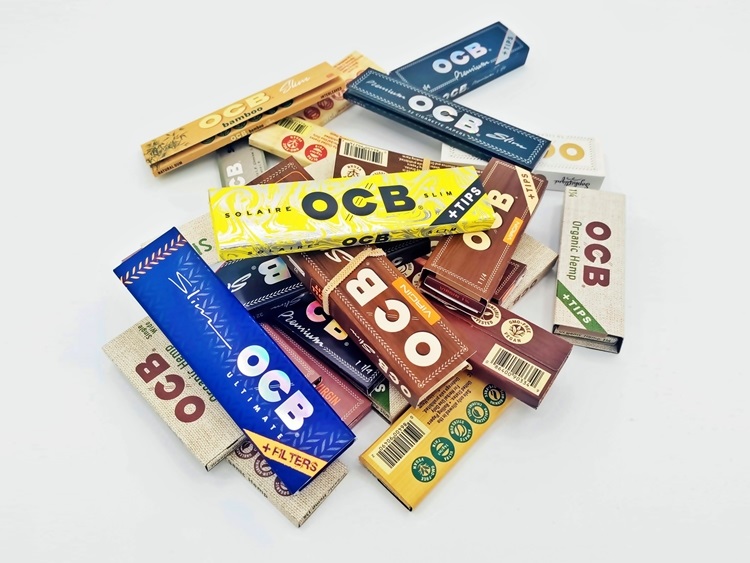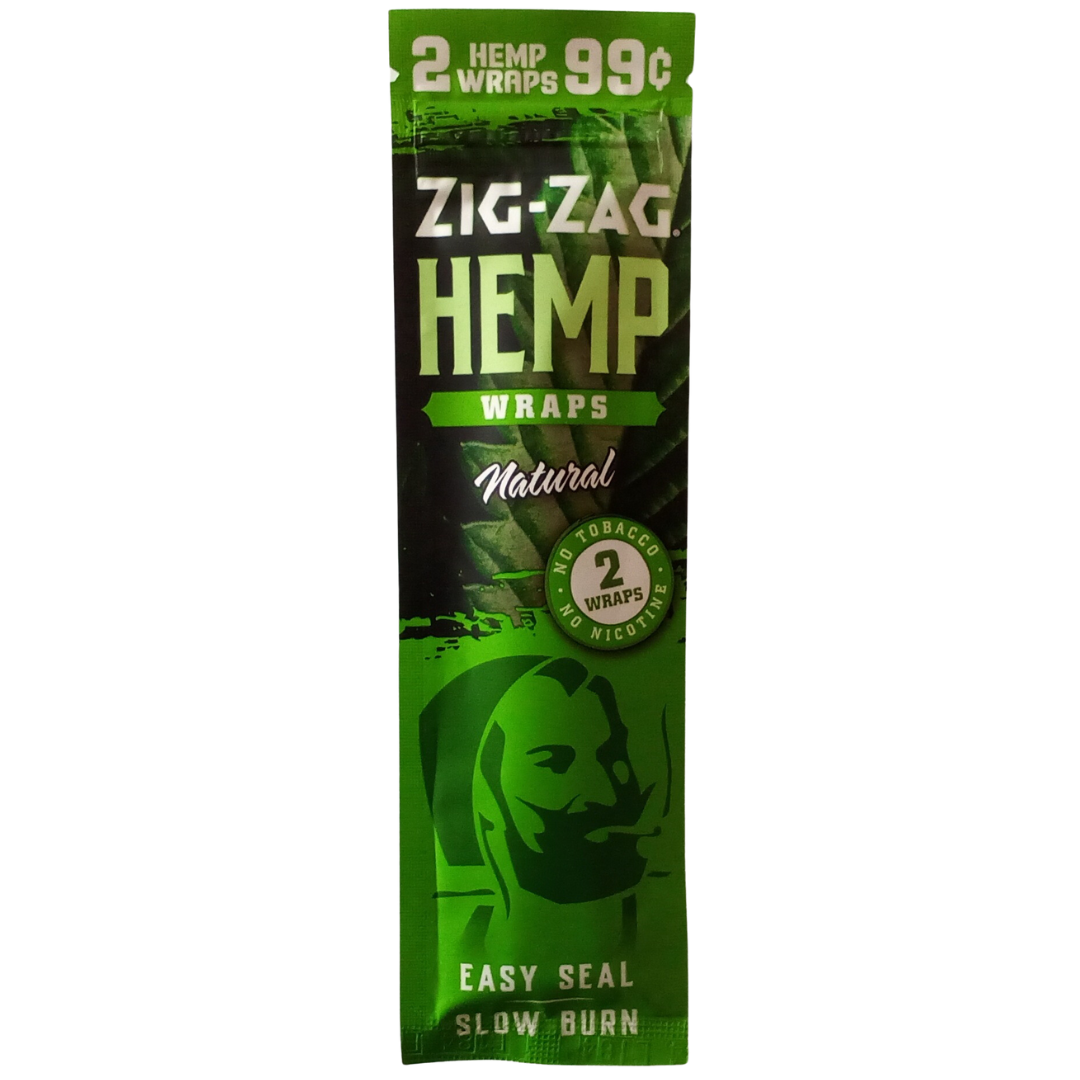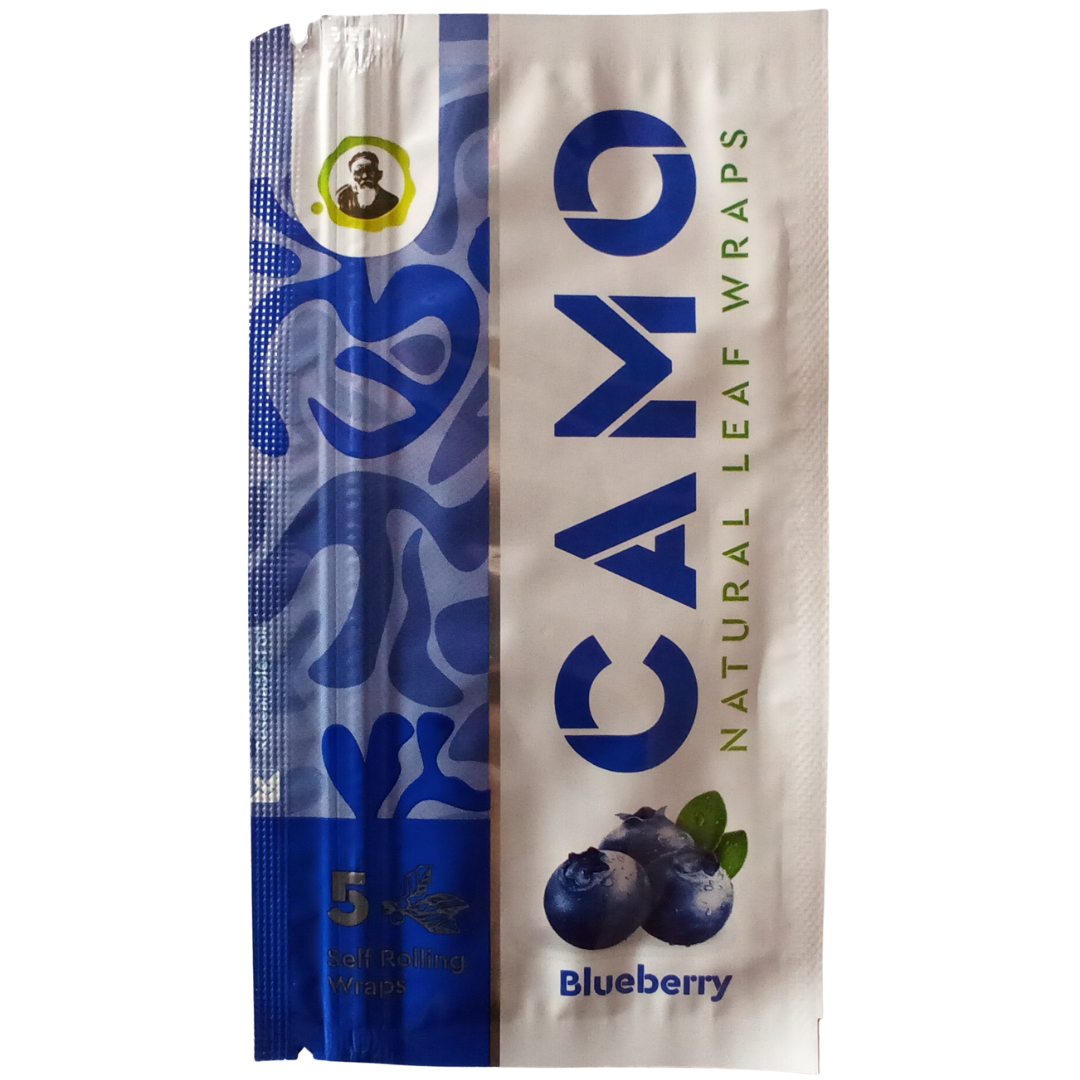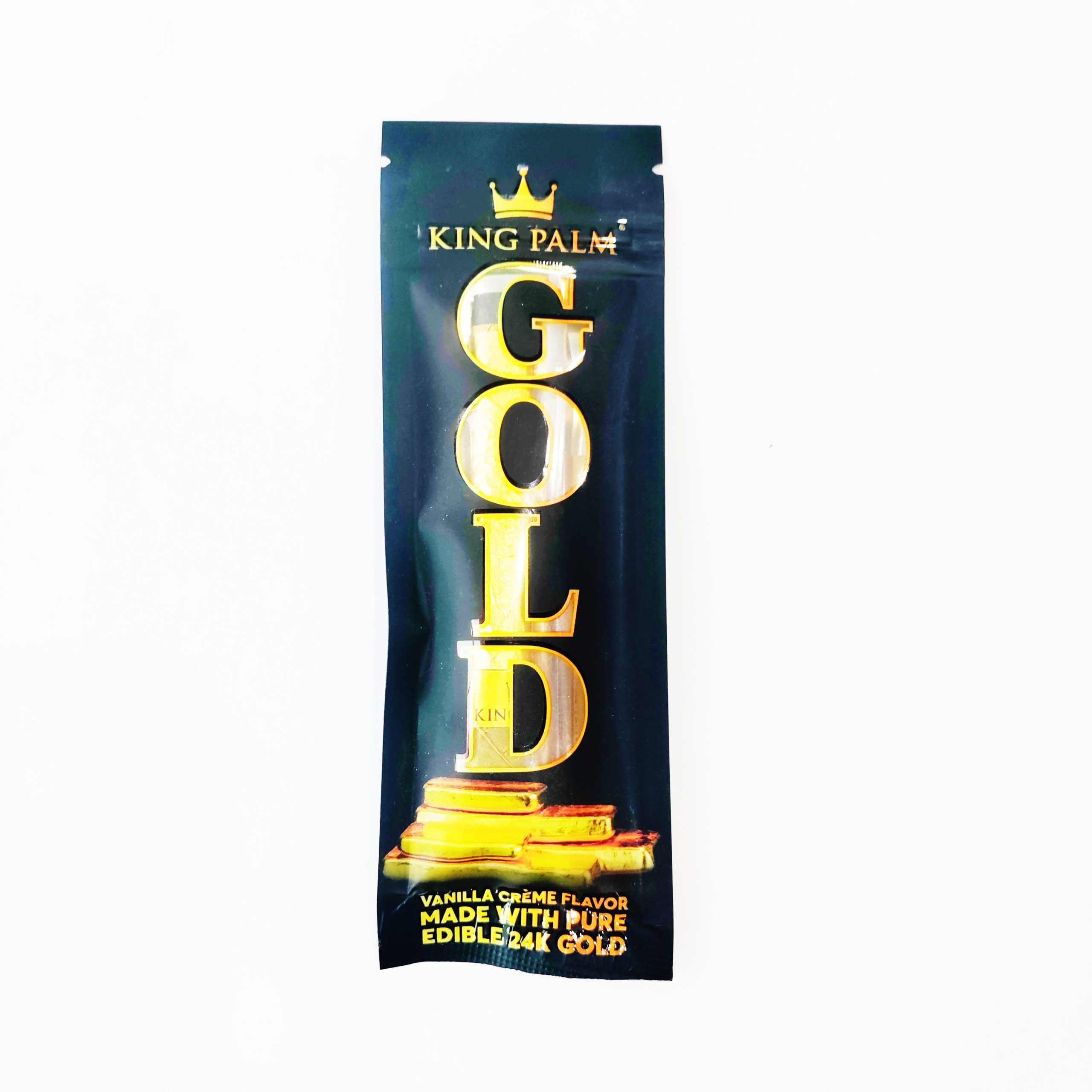
Frequent visitors of head shops like 710 Pipes tend to appreciate our mainstays, such as pipes, hookah products and rolling papers. Rolling papers come in various types, each offering a unique experience for smokers. From traditional materials like wood pulp to luxurious options like gold, the choices are as diverse as the preferences of those who use them. This comparison explores the distinct characteristics, benefits, and drawbacks of six popular rolling paper options.
Rolling Paper Types Compared
Rice Rolling Papers
Rice rolling papers are a popular choice for smokers seeking a cleaner, lighter smoking experience. Made from processed rice, these papers are exceptionally thin and almost transparent. The thinness of rice papers allows for a smoother, less harsh smoke, as they contain fewer impurities and additives.
One of the significant advantages of rice papers is their slow burn rate, which allows for a longer smoking session. However, their thinness also makes them more delicate and challenging to roll, especially in humid conditions where they can easily become too moist. Rice papers are ideal for those who prioritize a clean, unobtrusive flavor and are confident in their rolling skills.
| Pros of Rice Rolling Papers | Cons of Rice Rolling Papers | Recommended Buyers |
|---|---|---|
| Very thin, providing a cleaner smoke | Delicate and harder to roll, especially in humidity | Experienced rollers who prioritize flavor purity |
| Burns slowly | Tricky to handle due to thinness | Smokers seeking a longer-lasting, smooth experience |
| Minimal impact on flavor |
Hemp Rolling Papers

Hemp rolling papers have gained popularity in recent years, particularly among environmentally conscious smokers. Made from hemp fibers, these papers are a sustainable alternative to wood pulp and rice papers. Hemp is a fast-growing plant that requires minimal pesticides, making hemp papers an eco-friendly choice.
Hemp rolling papers are slightly thicker than rice papers but thinner than wood pulp. They offer a moderate burn rate and a smooth, even smoke. The taste of hemp papers is mild and earthy, complementing the flavor of the tobacco or herbs. Additionally, hemp papers are durable and easier to roll, making them a great option for both novice and experienced smokers.
| Pros of Hemp Rolling Papers | Cons of Hemp Rolling Papers | Recommended Buyers |
|---|---|---|
| Eco-friendly and sustainable | Slightly thicker than rice papers | Environmentally conscious smokers looking for a natural option |
| Smooth, even burn | Can be slightly pricier than wood pulp papers | Both novice and experienced smokers valuing ease of use and sustainability |
| Durable and easy to roll |
Flavored Rolling Papers
Flavored rolling papers add an extra dimension to the smoking experience by infusing the paper with various flavors, ranging from fruit to dessert-inspired tastes. These papers are typically made from wood pulp or hemp, with added flavoring agents.
The primary advantage of flavored papers is the enhanced smoking experience they provide, allowing smokers to enjoy a sweet or fruity taste with each puff. However, the flavoring can sometimes overpower the natural taste of the tobacco or herbs, which may not appeal to purists. Additionally, some flavored papers can contain artificial additives, which might not be ideal for health-conscious users.
| Pros of Flavored Rolling Papers | Cons of Flavored Rolling Papers | Recommended Buyers |
|---|---|---|
| Enhances the smoking experience with added flavor | Flavor can overpower the natural taste | Smokers who enjoy experimenting with different tastes |
| Available in a variety of flavors | Some papers contain artificial additives | Casual smokers who seek variety and novelty in their routine |

Wood Pulp Rolling Papers
Wood pulp rolling papers are the most traditional and widely used type. These papers are typically made from a blend of wood fibers, offering a thicker and more durable option for smokers. The thickness of wood pulp papers makes them easy to handle and roll, even for beginners. They burn slowly and evenly, making them a reliable choice for most smoking needs.
However, wood pulp papers can have a noticeable taste that might interfere with the natural flavor of the tobacco or herbs. Some users find them harsher on the throat and lungs, particularly if the papers are bleached. Unbleached wood pulp papers are available, offering a more natural and slightly healthier alternative, though they are still heavier than other types.
| Pros of Wood Pulp Rolling Papers | Cons of Wood Pulp Rolling Papers | Recommended Buyers |
|---|---|---|
| Easy to handle and roll | Noticeable taste | Beginners who need a durable, easy-to-use paper |
| Burns slowly and evenly | Harsher on the throat, especially if bleached | Budget-conscious smokers who prefer traditional options |
| Widely available and affordable | Heavier than other papers |
Gold Rolling Papers

Gold rolling papers are a luxurious and extravagant option, made from edible gold leaf. These papers are designed for those who want to make a statement and enjoy a unique smoking experience. Gold papers are typically made from a blend of gold leaf and a base material like hemp.
While gold papers are visually stunning and offer a smooth, even burn, they are primarily a novelty item. The gold does not significantly alter the taste of the smoke, but the experience of smoking gold is more about the aesthetic and the sense of luxury. Gold rolling papers are expensive compared to other types, making them a special occasion item rather than an everyday choice.
| Pros of Gold Rolling Papers | Cons of Gold Rolling Papers | Recommended Buyers |
|---|---|---|
| Luxurious and visually stunning | Expensive compared to other types | Occasional smokers who want a unique and memorable experience |
| Smooth, even burn | Primarily a novelty item | Smokers looking to make a statement or celebrate a special occasion |
| Unique experience | Does not significantly alter taste |
Pre-Rolled Cones
Pre-rolled rolling papers are a convenient option for those who prefer not to roll their own. These papers come pre-shaped into cones, making them easy to fill and use. Pre-rolled papers are available in various materials, including wood pulp, rice, and hemp.
The convenience of pre-rolled papers is their main advantage, as they save time and effort. They are particularly useful for beginners or those who struggle with rolling. However, pre-rolled papers can be more expensive than traditional rolling papers, and some users may find that they do not burn as evenly as hand-rolled options.
| Pros of Pre-Rolled Cones | Cons of Pre-Rolled Cones | Recommended Buyers |
|---|---|---|
| Convenient and time-saving | Can be more expensive | Beginners or those who struggle with rolling |
| Easy to use, ideal for quick preparation | May not burn as evenly as hand-rolled papers | Busy individuals prioritizing convenience, and smokers with limited rolling skills |
| Limited customization |

Which Wrap Should You Choose?
Each type of rolling paper offers a unique experience, catering to different preferences and needs. Wood pulp papers are traditional and durable, rice papers are thin and clean-burning, hemp papers are eco-friendly and smooth, flavored papers add extra taste, gold papers offer luxury, and pre-rolled papers provide convenience. The choice ultimately depends on the smoker’s priorities, whether they value taste, ease of use, or making a statement.
The History of Tobacco and Rolling Papers
While the love of smoking products permeates popular culture, very few of us are versed in the origins of the staples we rely upon today. We’ve reached deep into the past this week, exploring the respective journeys of tobacco and rolling papers to the popular forms we know and love.
Here is the timeline based on the provided text, with dates, bolded headers, and relevant descriptions:
5,000 BC – Tobacco Cultivation Begins
The tobacco plant was first cultivated in the Americas around 5,000 BC, alongside maize in central Mexico. Native Americans used tobacco in cultural and religious ceremonies and for its medicinal properties, including wound dressing and pain relief.

1492 – Tobacco Introduced to Europe
When Christopher Columbus arrived in the Americas, Native Americans introduced him to tobacco. The plant’s reputation quickly spread throughout Europe, where it was regarded as medicinal, and smoking became a popular way to consume it.
1532 – First Rolling Papers Traded
Alexandro Rizlette de Cramptone LaCroix traded a bottle of champagne for rolling papers made by French cavalry soldiers in Spain. Impressed by their innovation, he began making similar papers, a practice that continued in his family.
1660 – Lacroix Family Enters Paper Business
The Lacroix family began producing rolling papers, leading to the founding of their own paper mill in 1736. They found success in the paper business, with Napoleon becoming one of their first major clients.
1703 – First Mass-Produced Rolling Papers
Pay-Pay, the first company to mass-produce rolling papers, was founded in Alcoy, Spain. Although rolling papers had been used for over a century, this marked the beginning of their widespread availability.
1865 – RizLa+ Brand Established
The Lacroix family formally renamed their company RizLa+, with “Riz” referencing the rice used in their papers and “La+” likely referring to their family name. RizLa+ became a prominent brand in the rolling paper industry.

Late 19th Century – Rolling Paper Evolution
Over centuries, rolling papers evolved with improved functionality, experimenting with different materials like paper pulp, hemp, rice, and flax. These innovations catered to users’ desires for a well-packed roll and a smooth, slow burn. Cigar smoking surged in popularity after the start of the Civil War, and individual American cigar brands emerged in the mainstream market the decades that followed.
Early 20th Century – Flavored Papers Introduced
Flavored rolling papers emerged, significantly increasing the variety of products in the rolling paper industry. This innovation paved the way for the diverse selection of papers available in modern smoke shops.
1880 – Pre-Rolled Cigarette Revolution
James Albert Bonsack developed the first cigarette rolling machine, filing a patent on September 4, 1880. His machine, which could roll 200 cigarettes per minute, revolutionized the industry by significantly increasing production efficiency.

